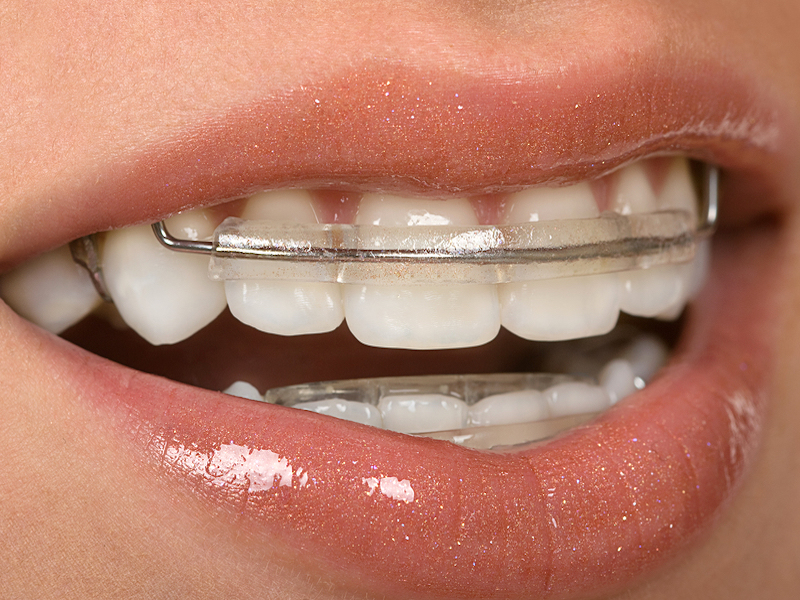Unlike traditional braces or the aligners given to you by your orthodontist post braces, spring retainers are simple aligners for teeth straightening. Spring retainers can correct teeth that have been slightly shifted. Unlike other retainers that are used to hold the position of teeth, these retainers can slightly move teeth and solve minor misalignments.
Made with wire spring in the middle, a spring retainer places pressure on the teeth when worn which can reduce crowding and maintain tooth spacing. Interested in all kinds of tooth aligners and teeth retainers? Find out more about spring retainers here.
How do spring retainers work?
Spring retainers are constructed with wire and an acrylic frame. They are only made after an orthodontist makes an impression of your teeth. Post this, a pair of spring retainers are made based on the straightened teeth.
Spring retainers can successfully move teeth only from 1-2 millimetres. This is one of the reasons why spring retainers are also widely used for teeth that have shifted post a prior orthodontic treatment. These retainers need to be worn everyday for almost 24 hours to work and can take up to 3 months to straighten out your teeth if worn correctly.
Spring Retainers Types
There are 6 main kinds of spring retainers available according to different needs. They are:
- Helix coil spring retainer: a popular retainer for minor adjustments to the lingual pad and shows advanced flexibility.
- Mushroom spring: used to make minor adjustments using a tensible bow made with acrylic.
- Modified spring: made to retain orthodontic corrections using a 3×3 clip design made with acrylic.
- Super modified spring: is the perfect amalgamation of the helix coil and the mushroom retainer designs.
- Standard clip design: used for minor post-treatment corrections and has a simple design
- 3×3 Spring design with wire extensions: unlike other retainers, this design contains wire extensions which modify additional 2-3 teeth.
Pros & Cons of Spring Retainers
Now that you understand what spring retainers are and the way they work, here are some pros and cons for you to assess if you need these types of retainers for your teeth.
Pros
- Spring retainers are easily removable. Though they are supposed to be worn for almost 24 hours of the day, they can be removed while eating and drinking. This keeps the retainers clean and you are free to consume whatever you feel like!
- These don’t attract attention. As they only consist of a single line of wire, they are very subtle. Unlike traditional braces that have wires, brackets clearly visible on your teeth, these retainers are simple, and inconspicuous.
- These retainers are relatively cheaper than undergoing an invasive treatment for straightening your teeth. While these may require you to constantly wear them for at least 3 months, you can save a lot of money by choosing these over fancy treatments!
Cons
- Spring retainers are generally focused on the four front teeth. Only through more extensions and other technological support can these retainers be used for some additional teeth.
- These retainers also cannot be used for advanced orthodontic treatments or misalignment as they can only move teeth from 1-2 millimetres. So if you have deeper and more complicated issues, these retainers just won’t do.
All in all, spring retainers are great for someone with very minor teeth misalignments. They are removable, cheaper and easy on the eyes which make them perfect for some minor teeth straightening.
If you are looking to correct your smile and you feel like you don’t know where to begin, head to makeO toothsi. Their invisible aligners can fix several minor and advanced misalignment issues in a matter of months with their advanced technology, high quality retainers and their all around oral care knowledge!


